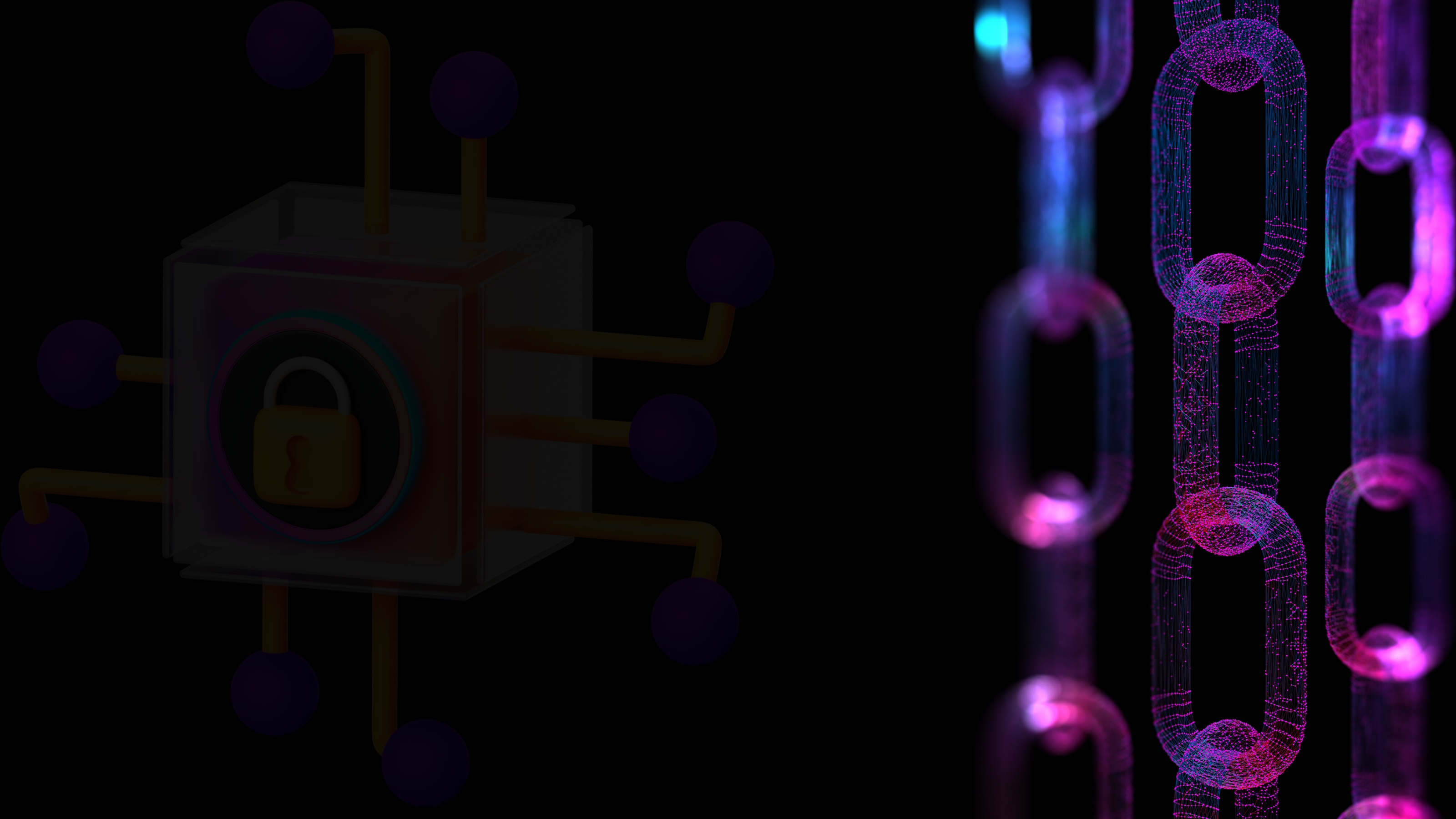Blockchain isn’t as widely known as terms like the cloud or the Internet of Things. It’s not a technology you see or interact with directly, like a smartphone or an Amazon delivery. However, in a time when anyone can edit a Wikipedia page, blockchain provides a solution to a question we’ve faced since the beginning of the internet: How can we trust what happens online?
Every year, more aspects of our lives—such as how we manage governments, run economies, and interact in society—are happening online. We bank, shop, and use various apps that collect and share our personal information. Now, imagine blockchain as a digital record-keeper, silently logging every transaction, whether it’s exchanging money, services, or private data. Blockchain stores this information in secure blocks that are encrypted and unchangeable. These blocks are then distributed across a global network of computers, known as “nodes,” ensuring the data is both secure and decentralized.
What is Blockchain? The Basics of an Invisible Technology
To understand why blockchain is such a game-changer, we first need to break down what it actually is.
At its core, blockchain is a decentralized digital ledger. This means it records transactions or data across multiple computers in a way that ensures no single entity has control over the entire system. Instead, every participant in the blockchain network has a copy of the ledger, making it nearly impossible for anyone to tamper with the information.
Here are some basic features of blockchain that make it unique:
- Decentralization: No single organization controls the blockchain.
- Immutability: Once data is recorded, it cannot be altered or deleted.
- Transparency: Every participant in the network can verify and view the transactions.
This structure creates trust in environments where trust is hard to come by, which is why blockchain has gained so much traction in industries that deal with sensitive or valuable information.

Why Blockchain is Called ‘Invisible Technology’
A blockchain consists of two main parts: a decentralized network that enables and checks transactions, and a secure ledger that this network maintains. Everyone in the network can access this shared transaction ledger, but there is no single point that hackers can target to corrupt records or digital assets. This decentralized trust means no single organization, like a major bank or a tech company such as Facebook or Google, controls the data. There are no third parties acting as gatekeepers of the internet. The strength of blockchain’s distributed ledger technology can be applied to various types of digital records and transactions, and we are already seeing many industries starting to embrace this change.
First, let’s look at big banks and tech companies. Large businesses often lead the way in innovation, and the rise of blockchain-based smart contracts is transforming blockchain into a tool that can handle various complex business deals, legal agreements, and automated data exchanges. Companies like Microsoft and IBM are using their cloud services to create custom blockchains for clients and explore their own applications, such as developing a global food safety network connecting manufacturers and retailers.
At the same time, many startups are harnessing this technology for various purposes, including global payments, music sharing, tracking diamond sales, and the legal marijuana market. This is why the potential of blockchain is so vast: it can be applied to nearly any digital asset or transaction.
While there are many economic, legal, regulatory, and technological challenges to overcome before blockchain becomes widely adopted, early adopters are already making significant progress. In the next few years, a large part of your digital life might be built on a blockchain foundation—and you might not even notice it.

Beyond Bitcoin
Blockchain is the data structure that allows Bitcoin (BTC) and other up-and-coming cryptocurrencies such as Ether (ETH) to thrive through a combination of decentralized encryption, anonymity, immutability, and global scale. It’s the not-so-secret weapon behind the cryptocurrency’s rise, and to explain how blockchain came to be, we have to begin briefly with the legacy of Bitcoin.
It’s crucial to recognize that Bitcoin and blockchain are not the same. In Garzik’s TEDx Talk, he referred to Bitcoin as “an organism,” highlighting that it has multiple layers, similar to other software. At the surface, the public Bitcoin blockchain holds billions of dollars in cryptocurrency, but underneath it is a ledger like any other blockchain. This decentralized ledger technology, along with its many potential uses for safely transferring data and digital assets online, is what this article focuses on.
Blockchain’s Potential in Shaping the Future
While blockchain’s current applications are impressive, its future potential is even more exciting. Here’s how this silent technology could shape the world in the coming years:
1. Digital Identity
One of the most promising uses of blockchain is in the area of digital identity. In the future, blockchain could allow individuals to:
- Own and Control Their Data: Blockchain could empower people to own their personal information and decide who gets access to it.
- Simplify Verification Processes: From applying for jobs to verifying your age at the local pub, blockchain could make identity verification quicker and more secure.
2. Voting Systems
Blockchain could also revolutionize voting by:
- Preventing Fraud: Blockchain’s immutability ensures that votes cannot be tampered with once they are cast.
- Increasing Voter Turnout: By making it easier to vote remotely and securely, blockchain could increase voter participation in elections.
3. Smart Contracts
Smart contracts are self-executing contracts with the terms of the agreement directly written into code. Blockchain could make these contracts more:
- Efficient: Transactions happen automatically when conditions are met, reducing the need for intermediaries.
- Trustworthy: With blockchain, all parties can verify that the terms of the contract have been fulfilled, reducing the risk of disputes.

What Are Smart Contracts?
If you consider blockchain as a data operating system, then smart contracts are its standout feature. Smart contracts introduce advanced rules and logic on top of a blockchain, allowing them to automate traditional contract management. This digitization process is similar to how apps like Uber have changed the way we book a taxi, eliminating the need to wave your hand in the air. Smart contracts are a versatile tool that can act as the blockchain middleman for various agreements and data exchanges.
Why Businesses Can’t Afford to Ignore Blockchain
Blockchain isn’t just for tech companies or cryptocurrency enthusiasts—it’s for any business that wants to stay competitive in the future. Here’s why businesses across industries need to pay attention:
1. Enhanced Security
In a world where data breaches and cyberattacks are becoming more common, blockchain offers unmatched security. Its decentralized nature makes it difficult for hackers to compromise data, which is why it’s increasingly being adopted by businesses dealing with sensitive information.
2. Improved Transparency
Blockchain provides an unprecedented level of transparency in transactions. Businesses that adopt blockchain can offer their customers and partners real-time visibility into processes like supply chain management, building trust and confidence.
3. Cost Efficiency
By eliminating intermediaries, blockchain can significantly reduce operational costs. Whether it’s streamlining payments, managing contracts, or tracking inventory, blockchain helps businesses do more with less.
Misconceptions About Blockchain
Despite its growing popularity, blockchain is still widely misunderstood. Let’s clear up some common misconceptions:
1. Blockchain Is the Same as Bitcoin
Blockchain and Bitcoin are not the same. Bitcoin is a cryptocurrency, while blockchain is the underlying technology that powers it. Blockchain has far broader applications beyond digital currencies, as we’ve seen in finance, healthcare, and more.
2. Blockchain Is Only for Tech Experts
Many people assume that blockchain is too complicated to understand or use. However, businesses across all sectors are finding ways to integrate blockchain without needing extensive technical knowledge.
3. Blockchain Is a Fad
Blockchain is far from being a passing trend. Its ability to provide security, transparency, and efficiency means it’s here to stay, and its applications are only expanding.
Conclusion: How We Build a Blockchain-Based World
Blockchain may be invisible, but its impact on our world is anything but. This silent technology is reshaping industries, improving security, and opening up new opportunities that were previously unthinkable. As blockchain continues to evolve, its role in shaping the future will only grow more significant.
For businesses and individuals, embracing blockchain now means staying ahead of the curve in a rapidly changing world. Whether you’re looking to streamline operations, secure sensitive information, or explore new digital frontiers, blockchain offers a powerful solution for the challenges of tomorrow.
In conclusion, blockchain is silently shaping the future in ways that many don’t even realize. The question is—will you be ready for the change?


